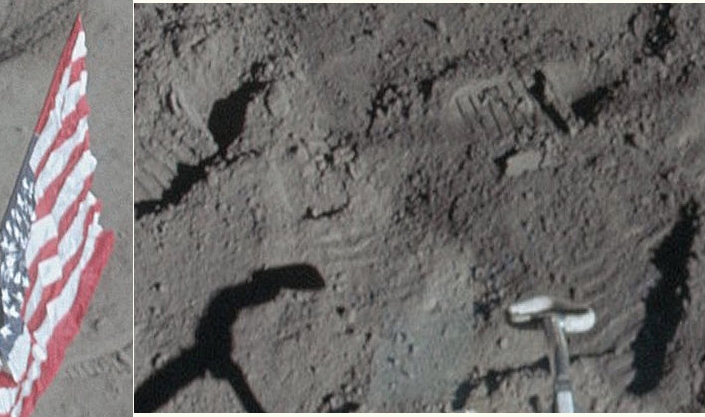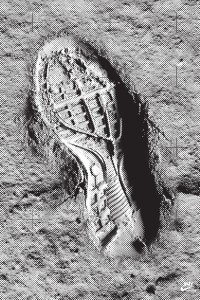
And MLD (moon landing deniers) many of which likely support Putin (and think Van Allen belts would prevent safe travel thru them), must be squinting to find the flying dust since such claim that is why the flag (with a rod holding it out) was due to wind. As for the belts, by now you must have time to read what refutes this nonsense.
The innermost Van Allen belt sits somewhere between 400 to 6,000 miles above the surface of our planet. ... For near-Earth missions, the Van Allen belts are not a hazard to spacefarers. It was, however, a hazard for the Apollo missions. ...Charged particles are damaging to human bodies, but the amount of damage done can range from none to lethal, depending on the energy those particles deposit, the density of those particles, and the length of time you spend being exposed to them.
In the case of the Apollo missions, the solution was to minimize the second two factors. We can’t control the energy of those particles, though they can be large. The density of the Van Allen belts is well known (from sending uncrewed probes through them), and there are hotspots you can definitely avoid. In particular, the innermost belt is a rather tightly defined region, and it was possible to stay out of it for the trip to the Moon. The second belt is much larger, and harder to avoid, but there are still denser regions to avoid. For the Apollo trips, we wanted to send the astronauts through a sparse region of the belts, and to try and get through them quickly. This was necessary in any case; the crafts had to make it to the Moon in a reasonable amount of time, and the shorter the trip, the less exposure to all sorts of radiation the astronauts would get.
In the end, it seemed that these tactics worked; the on-board dose counters for the Apollo missions registered average radiation doses to the skin of the astronauts of 0.38 rad. This is about the same radiation dose as getting two CT scans of your head, or half the dose of a single chest CT scan; not too bad, though not something you should do every week. - https://www.forbes.com/sites/jillianscudder/2017/06/16/astroquizzical-van-allen-belts-barrier-spaceflight/?sh=22c61b556f8d
Are there any risks for humans passing through the van Allen radiation belts?
There are mainly two types of radiation risks to humans. Firstly, what we call deterministic effects, which can be long term low-level, or short-term high-level radiation exposure: they result in disruption to the central nervous system, suppression of haematopoiesis in bone marrow, cataracts and other vision impairment, and acute radiation sickness, which would be a significant risk on extravehicular activities (EVAs, or spacewalks). Secondly, there are stochastic effects, which are normally thought of as an increased chance of cancer. Especially in the case of stochastic effects, heavier particles present greater risk of impact on human biology, because those heavier particles have a greater ionisation over a short distance.
So they do not represent such a serious issue. Why?
Because we know where they are, we know when we’re going to fly through them, we can do that quickly...Technically any astronaut on the International Space Station crosses some parts of the belts at a low altitude but all Apollo mission astronauts will have flown through the radiation belts on their way to the Moon. The Apollo missions followed ballistic trajectories, so they passed through the belts very quickly which reduced the risk from this population to a very low level. Apollo missions took only about 4.5 days to get to the Moon. The Moon is just under 400 000 km away and the radiation belts only extend to around 60 000 km, so not a huge fraction of that time is necessarily spent in those belts.
Did these astronauts report any radiation-related symptoms?
That’s hard to say because there’s a lot of personal data that is protected. Some astronauts have reported “seeing” radiation – some kind of “snow” or flashes of light – that they can see even when their eyes are closed. This effect is well reported. - https://blogs.esa.int/orion/2022/12/10/the-van-allen-belts-are-they-dangerous/
But you can make us look ignorant if you want.

